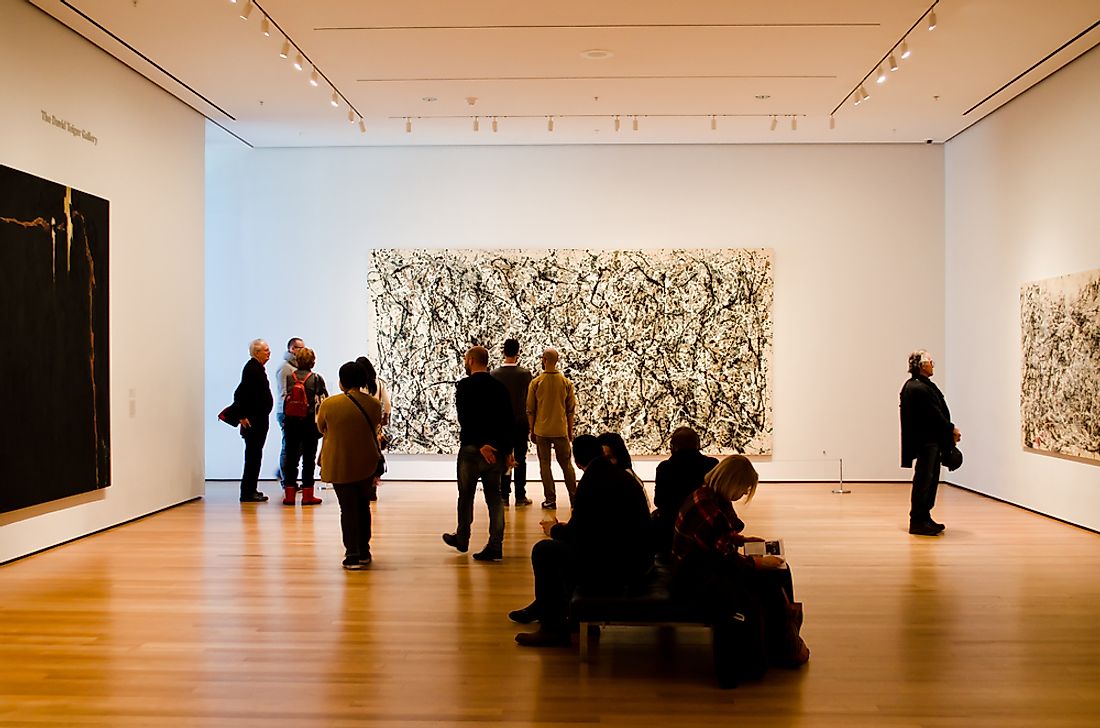Famous Artwork: No.5, 1948

No.5, 1948 is a painting with a composition board called the fiberboard. The art was made by Jackson Pollock, a famous American painter who greatly contributed to the abstract expressionist movement. The fiberboard is eight feet in length and four feet in width. Jackson Pollock painted it with liquid paints, specifically, the resin paints mostly referred to as oil paints. No.5, 1948 is a combination of white, brown, yellow and gray paint and is often thought to look like a dense bird's nest.
Jackson Pollock's Life
Pollock was a favorite American painter known for contributing to the abstract expression movement, and who had unique skills of drip painting. Pollock had a volatile personality due to his alcoholism. His art career became stronger in from 1945 when he married artist Lee Krasner, who brought a positive influence on his artwork. Jackson Pollock died at 44 from in a car accident that occurred as a result of his alcoholism, and a memorial exhibition was created for him in Museum of Modern Art, New York City.
Period of Painting No.5, 1948
The painting was initially created by Pollock in 1948 but has undergone a series of changes since then. In January 1949, Alfonso A. Ossorio bought the painting at a price of $1500. Unfortunately, the painting was damaged at some point, possibly during transportation. Jackson repainted the damaged part before it was delivered to Ossorio. When Ossorio noticed the change it was insisted that Pollock had repainted the whole thing. Pollock offered to rework the whole painting and gave Ossorio the artwork with new qualities from thorough overpainting, making him attest the original concept of the art. Therefore, Jackson Pollock did the painting of No.5, 1948 in the period of 1948 to January 1949.
Legacy of No.5, 1948
The painting has a strong legacy of being a modern reference in songs and films. In the film Ex Machina, No.5, 1948 played a core role where the wealthy CEO (Nathan Bateman) uses it as a real lesson for Caleb Smith, the protagonist. He says that the painting could not be there if Pollock had only painted within his knowledge. Therefore, it emphasizes the problem of epistemology and consciousness.
Moreover, The Stone Roses used the painting in the song "Going Down" by saying that the lady they are referring to looks like Jackson's painting. Also, John Squire, the guitarist of the group, made cover artwork similar to No.5, 1948 for the releases of the band between 1988 and 1989.
Financial Worth
No.5, 1948 is currently in a private collection in New York, and is currently the most valuable painting in the world. Its price was $140 million in 2006 when it was sold to another collector. According to the deputy director of art in Australia, David Cook, the value will continue rising since there are so few Pollock's painting left.











